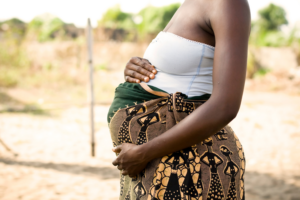World Population Day: Five reasons to stop panicking over low birth rates
Written by Olivia Nater | Published: July 7, 2023
July 11 is World Population Day, a United Nations observance day which seeks to raise awareness of population issues. There are many misconceptions about demographic trends and their implications. Even though our global population soared past the 8 billion mark last November and is projected to keep growing to over 10 billion in the 2080s, population coverage in the media is currently dominated by concern about a supposed “baby bust.”
Space colonization-obsessed tech billionaire Elon Musk went as far as making the bizarre claim that low birth rates are “a much bigger risk to civilization than global warming.”
Fewer births lead to reduced population growth and an increase in the average age of a population —politicians and economists (and some rich people) fret about this as it can mean a smaller future pool of consumers and taxpayers, slower economic growth, and more strain on social services such as pensions and healthcare.
In response to these socioeconomic fears, countries with low fertility, especially in Europe, Northern America, and Eastern and South-Eastern Asia, are rolling out policies to raise fertility rates. According to the UN, the proportion of governments implementing such policies increased from 9% in 1976 to 28% in 2019.
With the exception of draconian coercive policies such as contraception restrictions in Iran and Afghanistan, most pro-natalist policies provide financial incentives, ranging from baby bonuses to tax breaks for larger families to subsidized daycare, but their effectiveness is very limited.
Here are five reasons governments need to stop fighting low fertility rates:
1) Low birth rates are a result of women’s empowerment.
 It’s rather telling that in every country where women are free to control their fertility and to pursue higher education and careers, the fertility rate has dropped below the average global replacement level of 2.1 (two births to replace the parents, with an additional 0.1 to account for child mortality).
It’s rather telling that in every country where women are free to control their fertility and to pursue higher education and careers, the fertility rate has dropped below the average global replacement level of 2.1 (two births to replace the parents, with an additional 0.1 to account for child mortality).
It’s also telling that even the countries with the most family-friendly policies have failed to reverse this downward trend. Sweden’s fertility rate, for example, has hovered below 1.7 for the past three years — the last time its fertility rate was above 2 was in 1992. France’s fertility rate, the highest in Europe, hasn’t been above 2 since 2010, and now stands at 1.8.
Children are expensive, but monetary constraints aren’t the only reason people nowadays are choosing to have fewer of them. Quite simply, when women have more choices, small families become the norm.
2) Small families are good for people and society.
Adults benefit from choosing small families by having more time and energy for other relationships they value, and to pursue their personal and career goals. Kids benefit in many ways from having fewer siblings also. Being able to allocate more resources and attention per child generally means kids grow up happier, healthier, and better prepared for the future.
Reduced population pressure also means less competition for jobs, cheaper housing, and less strain on social services and public infrastructure. The combination of all these factors leads to thriving societies.
3) Our planet needs zero population growth.
 Perhaps most importantly, we should be embracing declining birth rates as a critical step towards a more sustainable future. Our impact on the planet is a product of how many of us there are and how much each of us consumes. Population growth is a significant root driver of climate change, biodiversity loss, resource depletion and pollution. Stabilizing our population at a level that can be sustained by our finite planet means a better quality of life for everyone and averting catastrophic events triggered by relentless pressure on our rapidly deteriorating environment.
Perhaps most importantly, we should be embracing declining birth rates as a critical step towards a more sustainable future. Our impact on the planet is a product of how many of us there are and how much each of us consumes. Population growth is a significant root driver of climate change, biodiversity loss, resource depletion and pollution. Stabilizing our population at a level that can be sustained by our finite planet means a better quality of life for everyone and averting catastrophic events triggered by relentless pressure on our rapidly deteriorating environment.
We clearly need to slash consumption in wealthy countries like the U.S., but this alone won’t cut it. A recent report by a group of prominent think-tanks found that our current population of 8 billion and counting could live within our planet’s limits if everyone adopted a minimum standard of living with an annual income per person of $15,000-$19,500, provided an equal distribution of resources. In a world where everyone is striving for extra comforts, this is not a very realistic target.
4) Babies are dependents too.
Governments worry about a growing proportion of non-working dependents as a result of population aging, but trying to counter this with more babies makes little sense, as they are also non-working dependents, arguably a lot more so than older people. It takes many years for a baby to turn into a tax-paying worker, and while they don’t require pensions, young dependents necessitate investment in other areas, such as education.
Furthermore, retirees often make significant contributions to society in the form of voluntary work and childcare. Greater investment in preventive healthcare to keep older people able-bodied for as long as possible is a more beneficial solution, as are workplace inclusion efforts to attract and enable people who are currently excluded from many workplaces. This includes young migrants, who make much better potential workers and tax payers in the short term than infants.
5) Growth-dependent economies have no place in the future.
 Ultimately, by trying to reverse the trend toward low birth rates, governments are clinging on to the outdated growth obsession that is responsible for our planetary crises. It should be obvious that a system which requires continuous economic and population growth cannot be sustained indefinitely. In the words of the European Environmental Bureau (EEB), there is “no empirical evidence supporting the existence of a decoupling of economic growth from environmental pressures on anywhere near the scale needed to deal with environmental breakdown.”
Ultimately, by trying to reverse the trend toward low birth rates, governments are clinging on to the outdated growth obsession that is responsible for our planetary crises. It should be obvious that a system which requires continuous economic and population growth cannot be sustained indefinitely. In the words of the European Environmental Bureau (EEB), there is “no empirical evidence supporting the existence of a decoupling of economic growth from environmental pressures on anywhere near the scale needed to deal with environmental breakdown.”
We need new economic systems that value human lives and a healthy environment over profit and growth. Let’s embrace low birth rates as part of a welcome, necessary transition toward a brighter future. And we need to go further — hundreds of millions of women in low- and middle-income countries still have an unmet need for modern contraception and no decision-making power over their own bodies and lives. Let’s step up funding for international family planning and women’s rights to achieve a happier, more just world with a human population living in balance with the natural environment.

